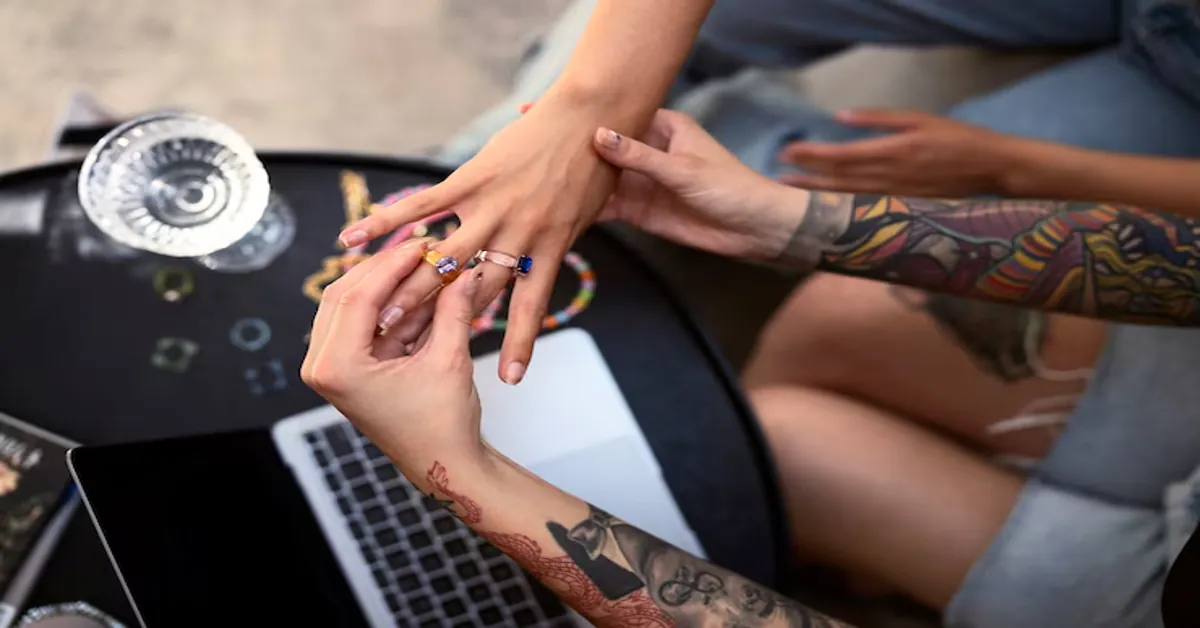Finger tattoos have carved out a bold space in the world of body art. They’re subtle yet expressive, minimal yet meaningful. Whether you want a discreet symbol of love, a bold expression of identity, or simply appreciate the elegance of minimalist ink, finger tattoos offer endless creative possibilities.
But before you commit to ink on one of the most visible—and sensitive—parts of your body, it’s essential to understand what comes with it. From design ideas to healing, fading, and long-term care, this complete guide will walk you through everything you need to know about getting a finger tattoo.
Why Finger Tattoos Are So Popular
In recent years, finger tattoos have surged in popularity thanks to influencers, celebrities, and the rise of minimalist body art. Stars like Rihanna, Hailey Bieber, and Justin Bieber have made finger ink fashionable, leading to increased demand among people looking for something small, stylish, and symbolic.
Why They Stand Out:
- Extremely visible and photogenic
- Great for minimalist or symbolic designs
- Popular for couples, friends, or personal statements
- Quick to get done compared to larger pieces
If you’re looking for a tattoo that makes a statement without covering a large area, finger tattoos offer the perfect balance of subtlety and impact.
Pros and Cons of Finger Tattoos
Before heading to your artist, weigh the pros and cons to make sure you’re making a well-informed decision.
Pros:
- Highly visible and expressive
- Perfect for small, meaningful symbols
- Quick tattoo sessions (usually under 30 minutes)
- Minimalist and stylish aesthetic
Cons:
- Fade quickly due to constant use and exposure
- More prone to ink blowouts or distortion
- Require frequent touch-ups
- Healing can be tricky with daily hand use
- Often painful due to thin skin and proximity to bone
Do Finger Tattoos Hurt?
In a word—yes. Finger tattoos are known to be more painful than tattoos on areas with more flesh. The skin on your fingers is thin, and there’s little cushioning between the surface and the bone.
Pain Factors Include:
- Location (inner finger tattoos are especially painful)
- Tattoo size and duration
- Personal pain tolerance
Still, the sessions are usually short, making the pain manageable for most people. Many describe it as a sharp scratch or hot sting rather than unbearable.
How Fast Do Finger Tattoos Fade?
Finger tattoos fade faster than most tattoos due to the nature of the skin on your hands. Your fingers are exposed to sun, water, soap, and friction daily—which wears down the ink over time.
Common Causes of Fading:
- Frequent hand washing
- Sun exposure
- Skin cell turnover (hands shed skin faster)
- Constant motion (gripping, flexing)
Fact: Some finger tattoos start fading noticeably within a few months and may require a touch-up within the first year.
Most Popular Finger Tattoo Designs
Finger tattoos might be small, but that doesn’t limit your creativity. In fact, simplicity often works best due to the limited space.
Top Finger Tattoo Ideas:
- Initials or Names – Perfect for romantic partners or family tributes
- Tiny Symbols – Hearts, stars, moons, crosses, arrows, dots
- Roman Numerals – Birthdates or special dates
- Matching Tattoos – Great for couples or best friends
- Line Work or Geometric Designs – Clean, modern aesthetic
- Astrological Symbols – Personal and meaningful
- Words – “Love,” “Hope,” “Faith,” usually across the knuckles
- Floral Patterns – Small roses or vines wrapping around the finger
- Ring Tattoos – Permanent alternatives to wedding bands
- Spiritual Symbols – Om, lotus, chakras, etc.
Minimal detail works best, and your artist may recommend a bolder line style to ensure longevity.
Long-Term Care and Healing Tips
Finger tattoos require diligent aftercare due to their high exposure. Proper care ensures better healing and reduces the risk of fading or infection.
Healing Timeline:
- Day 1–3: Redness, swelling, and initial healing
- Day 4–7: Scabbing and flaking begins
- Week 2–3: Peeling slows down
- Week 4+: Fully healed—but the tattoo may appear lighter
Essential Aftercare Tips:
- Keep the tattoo clean and dry
- Use antibacterial ointment or fragrance-free moisturizer
- Avoid scrubbing or soaking the area
- Limit sun exposure—always apply SPF once healed
- Avoid gloves or tight rings during healing
- Do not pick scabs—let them fall off naturally
Touch-ups are often necessary, so follow up with your tattoo artist after healing.
Finger Tattoo Placement Ideas
The beauty of finger tattoos is that there are several placements to consider, each with a different vibe.
Popular Placement Options:
- Side of the Finger (outer/inner): Great for initials or symbols
- Top of the Finger: More visible, better for standalone art
- Knuckles: Best for single letters or bold statements
- Palm Side (inner finger): Very hidden but fades quickest
- Cuticle or Nail Line: Micro tattoos that make a subtle impact
Pro Tip: Discuss ink longevity based on your placement choice—some areas, like the inner fingers, fade much faster than others.
What to Expect from the Tattooing Process
Even though finger tattoos are small, the process requires precision. Here’s a breakdown:
1. Consultation
Discuss your design, placement, and potential fading with your artist. Many pros will guide you on sizing for clarity.
2. Stenciling
The design is transferred to your finger to visualize placement.
3. Tattooing
Most sessions last 10–30 minutes. Expect some pain but nothing unbearable.
4. Bandaging
Your artist will apply a bandage and give aftercare instructions.
5. Healing
Stick to aftercare rules and prepare for possible touch-ups in the future.
Final Thoughts and Next Steps
Finger tattoos are bold, personal, and stylish—but they also come with unique challenges. Before committing, understand the pain, fading risks, and long-term upkeep. If you love minimal, meaningful tattoos and aren’t afraid of a touch-up or two, finger ink might be the perfect choice for you.
Key Takeaways:
- Go to a professional, experienced artist
- Choose clean, bold designs over intricate details
- Expect to need a touch-up eventually
- Care during healing is critical to longevity
FAQs About Finger Tattoos
Q1: Do finger tattoos really fade that quickly?
A: Yes. Due to friction and skin shedding, fading can begin within months, though proper care can delay this.
Q2: Are finger tattoos safe?
A: Absolutely, as long as you go to a reputable, licensed artist and follow proper aftercare guidelines.
Q3: How much do finger tattoos cost?
A: Typically $50–$150 depending on the artist and design. Small doesn’t always mean cheaper due to placement difficulty.
Q4: Can I get a finger tattoo over an existing scar?
A: Possibly. It depends on the scar’s depth and texture—consult with a skilled tattoo artist beforehand.
Q5: Do finger tattoos hurt more than other tattoos?
A: Yes, usually. Fingers have less fat and more nerve endings, making the experience sharper than tattoos on fleshier parts.
Call to Action:
Thinking of getting your first finger tattoo? Share your design ideas in the comments, and don’t forget to bookmark this guide for reference. If you’re looking for minimalist tattoo inspiration, check out our articles on fine line tattoos and wrist tattoos!









